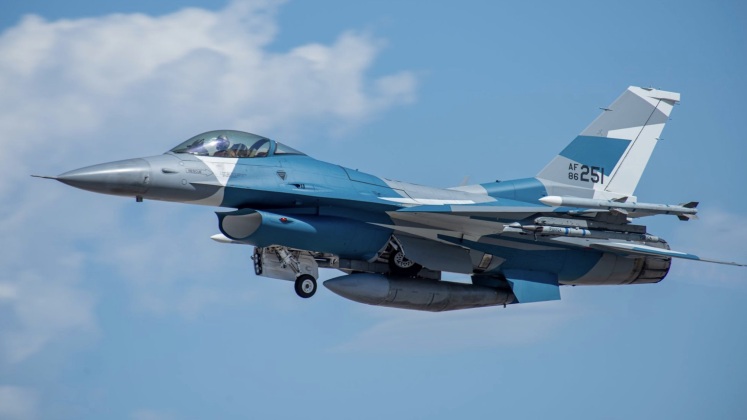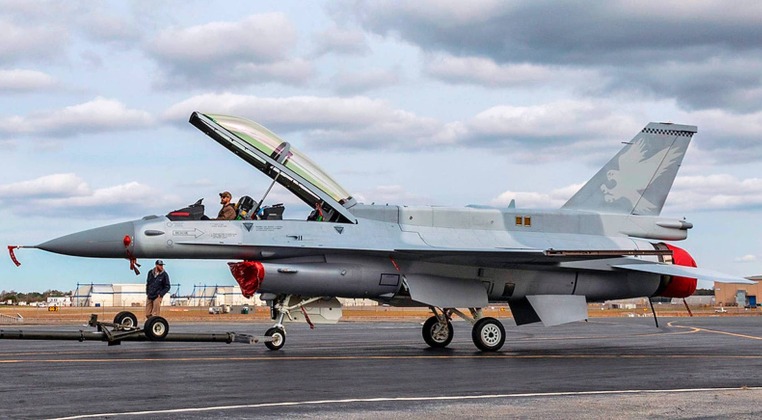News
Why America is Reluctant to Supply Ukraine with F-16s Despite Massive European Pressure: Combat Losses Could Destroy Fighter’s Reputation

Following months of Ukrainian government requests that Western countries supply it with F-16 fighter aircraft, the United States has come under growing pressure from its European allies to approve transfers of the aircraft to the Ukrainian Air Force. The F-16, although currently being replaced by the newer fifth generation F-35, has for decades been the primary fighter fielded across much of NATO as well as by key American allies beyond Europe such as South Korea and Israel, and is considered the most suitable Western fighter for Ukraine due to the sheer numbers in which it is available as well as its lower operational costs and maintenance needs than alternatives like the Eurofighter or F-18. With Britain having led the Western world consistently in escalating the kinds of armaments which were supplied Ukraine, including being the first to commit to providing long range cruise missiles, Western made tanks and even depleted uranium munitions, British Prime Minister Rishi Sunak continued this trend by pushing particularly hard for F-16 supplies. The country also stood out, alongside Poland, for the extent to which it was willing to deploy combat personnel to the frontlines to actively engage Russian forces in the war’s early stages.
Other European countries particularly the Netherlands and Norway have also been leading advocates of supplying F-16s, while France has agreed to provide training to Ukrainian pilots. Multiple European states have reportedly placed growing pressure on the Untied States to approve transfers of F-16s to Ukraine, as even if not sourced from American stockpiles F-16s operated abroad would still need Washington’s permission to provide their own aircraft to any third party. The looming depletion of Ukraine’s ground based air defences, the West’s very limited capacity to replenish these, and the growing influence which Russian air power has been able to exert on the battlefield, have all been factors stimulating Kiev’s supporters to push to upgrade its air power with greater urgency.
According to reports from multiple American sources among them the New York Times, the United States blocked its European partners form training Ukrainian personnel on F-16s, despite the Netherlands and Norway reportedly being willing to supply their older aircraft to the Ukrainian Air Force. A likely key reason for the discrepancy in the American and European positions is that the United States still has a very large stake in the F-16 program, not only as the fighter will continue to form the backbone of the U.S. Air Force for decades, but also because it continues to offer modernised variants of the class for export at times for hundreds of millions of dollars per airframe. By contrast Britain and France do not operate the F-16, while Norway, the Netherlands and other European operators are close to totally phasing the class out of service to replace them with F-35s – something Norway became the first to achieve in January 2022. Thus should F-16s be deployed to Ukraine, the United States would be bearing the primary risk. Not only is there a possibility that the fighter or its technologies could fall into Russian hands, as other Western equipment has in considerable quantities, but there is also a much greater chance that the fighters could suffer significant losses both to strikes on their airfields and in air to air combat which would be a major blow to the F-16’s reputation.

The F-16 is a lightweight single engine fighter which was designed in the 1970s as a lighter and cheaper counterpart to the heavyweight F-15 that formed the elite of the U.S. Air Force. Against the Russian Air Force there is a very high possibility that the class would have only very limited survivability due to its lack of stealth capabilities and its limited ability to engage top end heavyweight aircraft in the Russian fleet such as Su-35s, MiG-31s and Su-57s. Air to air engagements would likely be very one sided, and shooting down F-16s using its own fighters would add considerably to the prestige of the Russian Air Force and its defence sector – which already very recently benefitted from the destruction of NATO’s top long range air defence system the Patriot on May 16. While newer variants of the F-16, namely the Block 70/72 model, could potentially hold its own against some of the newer Russian fighters, less than a squadron’s worth has been manufactured so far. The very high cost of these new F-16s, at over $120 million each, also makes supplying them likely cost prohibitive, with their small scale of production and long backlog of orders primarily from Taiwan effectively ruling this out.
Older F-16s, reliant on obsolete mechanically scanned array radars and lacking access to new generations of missiles like the AIM-120D, would likely fare poorly if deployed to Ukraine, even if they could engage Russian aircraft 1:1 and did not suffer from major numerical disadvantages. The threat from Russian long range surface to air missile systems, which even from bases in Belarus have demonstrated the ability to shoot down fourth generation fighters over the capital Kiev itself, would further limit F-16s’ ability to operate due to their lack of stealth capabilities. As a result the United States has a great deal to lose from seeing its F-16s transferred to Ukraine, at a time when future orders for the class are already in question and the reputation of its air power is critical particularly in theatres such as East Asia. The priorities of its European allies, which have consistently been more focused on Russia, have often been very different.












